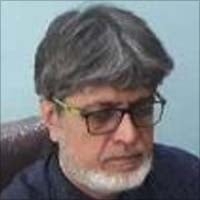The practice of reflexology is known from ancient times. The most common theory is that the earliest form of this therapy originated in China around 5000 years ago. Many healing systems originated from the early Taoists. Ancient Chinese used pressure points on the feet for healing the whole body. There are however many theories of the origins of this therapy. Several drawings over the years have been unearthed from other parts of Asia (India, Japan and china) showing diagrams of healing through the use of pressure points at the feet and hands.
Evidence on the use of reflexology has been also unearthed in Egypt in the tomb of Ankmahor at Saqqara. The tomb holds a series of hieroglyphs which shows a relatively detailed foot treatment. And hence the tomb is often popularly referred to the 'Physician's tomb'. These finds are estimated to date back to about 2330 B.C. It has hence helped to fuel the theory that this holistic healing art has in fact originated from ancient Egypt.
Another version on the origins of Reflexology believed by several historians is that it was practiced by the Incas. They were the people of the ancient Peruvian civilization in Latin America, dating back all the way to 12,000 B.C. It is said these natives passed down the knowledge of this therapy to the North American Indians, the Cherokee tribes around seventeenth century who still use this form of therapy to cure themselves of ailments.
One cannot draw a definite conclusion on the origins of Reflexology. However, we can gather and speculate from the knowledge we have.
We do know that India and China have shared strong bonds in the past with trade, and in education. India had several established universities and scholars who had attracted many disciples to come across the borders to gain and share their knowledge. Hence, the development of many alternative therapies and disciplines like acupressure, acupuncture, reiki and reflexology to name a few have such deep roots in India. Many of these share several common traits however bifurcating into their own medium. Hence the true origins or success of many of these therapies may have a patchy and sometimes confusing history. To pinpoint a solely individual or country for its development can be nearly impossible with many schools of thought. Nonetheless, we can safely say that these fine healing arts had been so highly successful, that it had grown in popularity during the ages and managed to stay alive even today, being shared and developed by its users.
Advertisement
Evidence on the use of reflexology has been also unearthed in Egypt in the tomb of Ankmahor at Saqqara. The tomb holds a series of hieroglyphs which shows a relatively detailed foot treatment. And hence the tomb is often popularly referred to the 'Physician's tomb'. These finds are estimated to date back to about 2330 B.C. It has hence helped to fuel the theory that this holistic healing art has in fact originated from ancient Egypt.
Advertisement
Another version on the origins of Reflexology believed by several historians is that it was practiced by the Incas. They were the people of the ancient Peruvian civilization in Latin America, dating back all the way to 12,000 B.C. It is said these natives passed down the knowledge of this therapy to the North American Indians, the Cherokee tribes around seventeenth century who still use this form of therapy to cure themselves of ailments.
Advertisement
One cannot draw a definite conclusion on the origins of Reflexology. However, we can gather and speculate from the knowledge we have.
We do know that India and China have shared strong bonds in the past with trade, and in education. India had several established universities and scholars who had attracted many disciples to come across the borders to gain and share their knowledge. Hence, the development of many alternative therapies and disciplines like acupressure, acupuncture, reiki and reflexology to name a few have such deep roots in India. Many of these share several common traits however bifurcating into their own medium. Hence the true origins or success of many of these therapies may have a patchy and sometimes confusing history. To pinpoint a solely individual or country for its development can be nearly impossible with many schools of thought. Nonetheless, we can safely say that these fine healing arts had been so highly successful, that it had grown in popularity during the ages and managed to stay alive even today, being shared and developed by its users.








